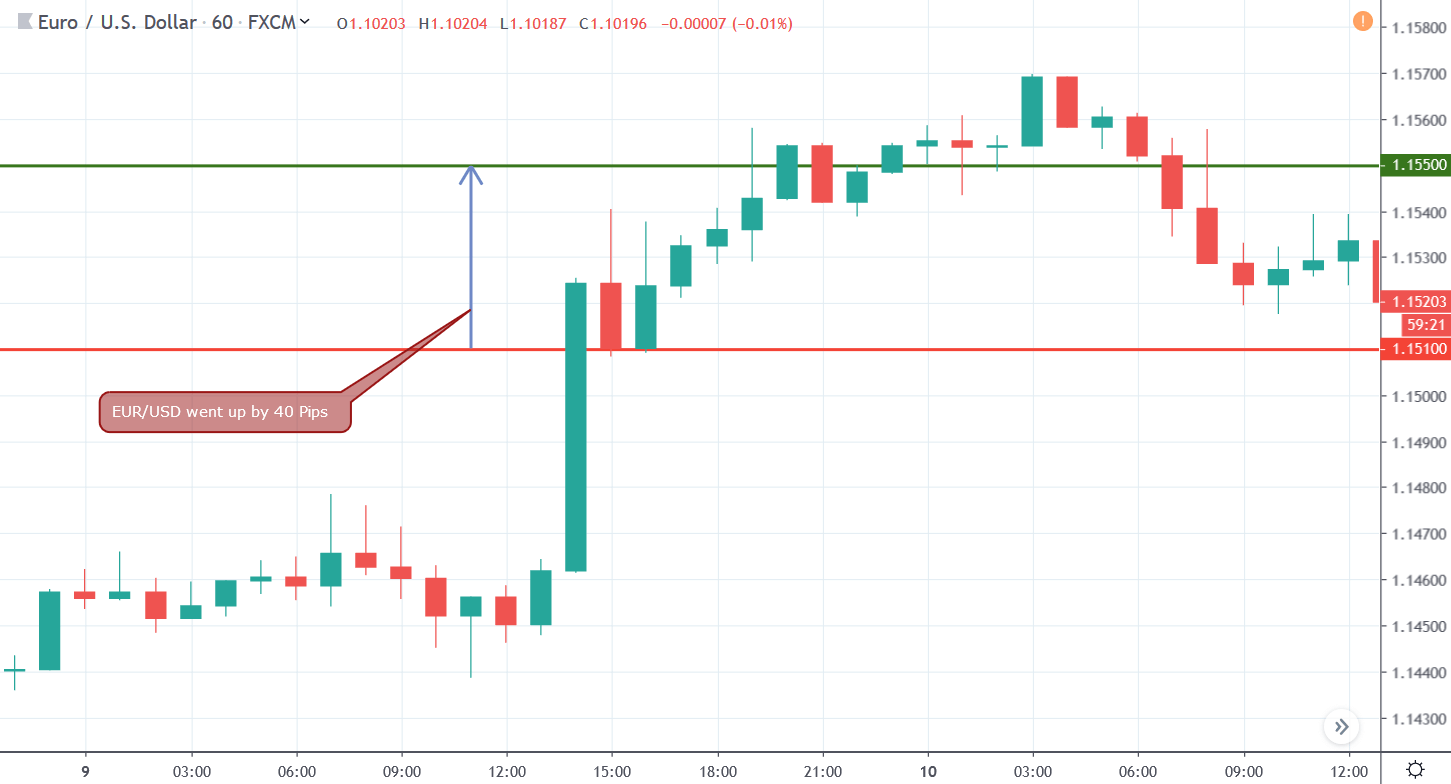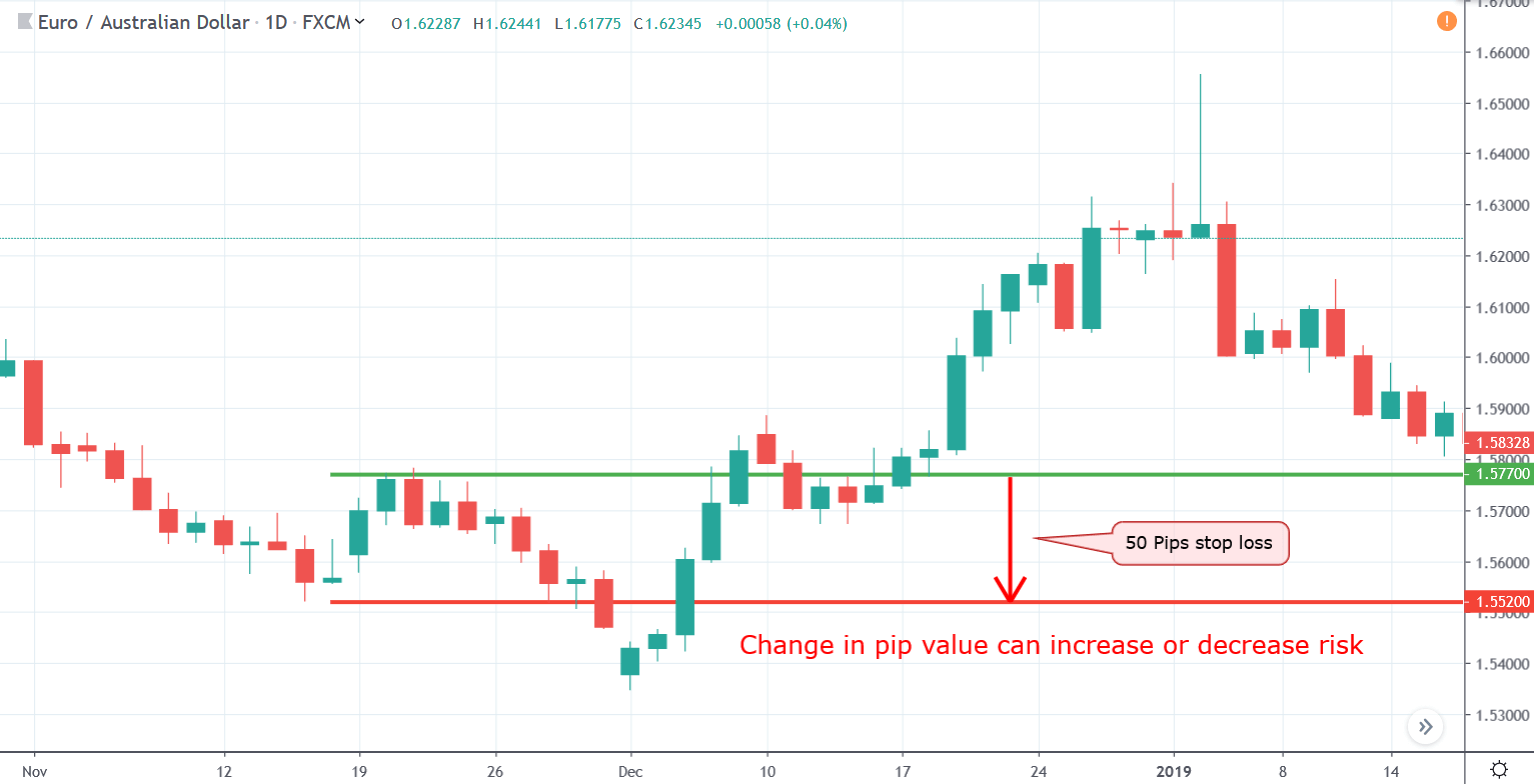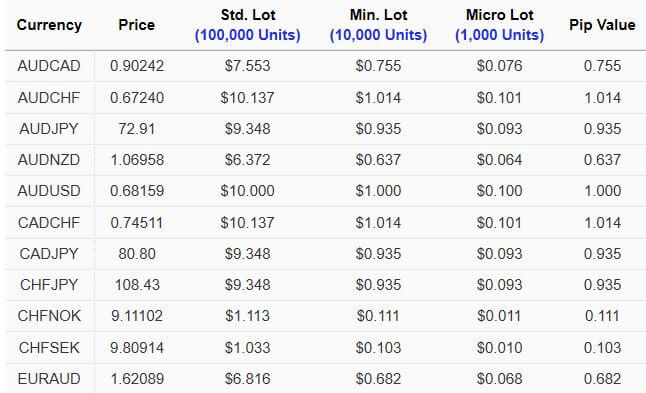Use ForexChurch Pip Calculator to Stay on Top of Your Money Management
Trading Forex comes with a number of caveats. Unfortunately, one of those is having to deal with mathematics. As soon as you delve into the world of Forex trading, you will have to deal with some simple arithmetic problems like calculating how much is a pip and how much money you want to risk in a particular trade. At the same time, you need to figure out how much profit you are expecting from that trade. Once you have these two factors measured, only then you will be able to get a grasp of sound money management.
It is easy to think that risking a fixed dollar amount per trade and expecting a certain dollar amount in profit would do the trick. Nonetheless, the spot Forex trading industry has established a basic structure regarding how to count the profits and losses and it is pip trading.
In the spot currency market, traders measure the movement of price in terms of Forex Pips and getting familiarized with this standard way to measure these things is a prerequisite of becoming a successful Forex trader. Since there are many currency pairs to trade and each pair has a different base and quote currencies, the value of each pip is going to differ for each currency pair. While you can manually calculate these values with a calculator or using Spreadsheets, the ForexChurch Pip Calculator can automate the process and make your life much easier in the long run.
- What is a Pip?
- Price Movements Can Affect Pip Value
- Knowing the value of a Pip is Important
- Calculating the Value of a Pip
- Finding Value of a Pip if You Have Different Account Denomination
- ForexChurch Pip Value Calculator Can Save You Time
What is a Pip?
When we go to the supermarket to buy some fruits, chances are you will use a unit of measurement. Here, the seller will usually quote you a price based on how many units of the said fruit you want to buy. In the spot Forex market, you are buying one currency for another and here, the unit of measurement is called a pip.
A pip is usually the lowest unit of change in value between the base currency and quote currency. For example, when you want to buy the Euro by exchanging your U.S. Dollar, you will see the Forex broker expressing it as a currency pair - the EUR/USD.
The first currency - the Euro - is called the base currency and the second one - the U.S. Dollar - is called the quote currency.

The price of EUR/USD will be expressed by an integer or whole number followed by several decimal numbers. So, the price of EUR/USD might be quoted as 1.1510. Now, once the value of the Euro goes up to 1.1511, it will represent a 0.0001 change in value. And that's a Pip for the EUR/USD. Therefore, as in figure 1, if the price goes up from 1.1510 to 1.1550, we would say that the EUR/USD went up by (1.1550 - 1.1510) 40 pips.
There are some other high volatility currency pairs where the pip is expressed as the second decimal number. For example, a Pip for the Japanese Yen pairs, such as the EUR/JPY, GBP/JPY, USD/JPY, etc. are represented by a change in the price of 0.01 instead of 0.0001. Hence, for example, if the GBP/JPY goes up from 120.00 to 120.01, it would constitute a movement of one pip. Similarly, if the GBP/JPY goes up from 120.00 to 120.20, it would mean a 20 pips movement.
A lot of brokers nowadays started to include a 5th decimal number to measure the price movement for common currency pairs like the GBP/USD and EUR/USD, and a 3rd decimal number for Yen pairs. This is called a pipette, which is valued at half of a pip. This was introduced so that traders can place bids for even smaller price movements than a pip and the introduction of pipette has helped drive market liquidity as a result.
Regardless of your Forex broker shows fractional pips or pipette, or not, counting pips for Forex trading is rather simple. In pairs with four decimals pips, the first digit after the period represents 1,000 pips. The second decimal represents 100 pips, and the third decimal represents 10 pips, where the fourth decimal represents 1 to 9 pips. Similarly, for currency pairs that count pips in two decimal points, the first decimal after period represents 10 pips and the second decimal represents 1 to 9 pips.
The introduction of pipette might have made it difficult to recognize which type of currency pairs is based on four or two decimals pips, but if you have any confusion, do consult your broker before trading live accounts as doing so will inevitably make a mess for your money management.
Price Movements Can Affect Pip Value
Trading foreign exchange is basically buying and selling other currencies with the particular denomination of currency you have in your account. Hence, if you have opened a U.S. Dollar-denominated brokerage account with your Forex broker and buying and selling other currency pairs, the value of each pip of that pair will change based on the price movements.
For example, if you are buying the EUR/AUD from a U.S. denominated brokerage account, the value of each pip of the EUR/AUD would be different based on the price of AUD/USD at that moment. If the price of AUD/USD is at 0.7500 and you are trading 1 mini lot (10,000 units) of EUR/USD, pip value would be $0.75. However, if the AUD/USD price goes up to 0.8000, the pip value would go up to $0.80 for the EUR/AUD. We will discuss how to calculate the pip value in a moment, for now, let's focus on why knowing the value of a pip for a specific Forex pair is important.
Knowing the value of a Pip is Important
Knowing the value of each pip in real-time is a vital bit of information for Forex traders. If you do not know the precise value of each pip for the currency pair you are trading, you would end up either buying or selling more or less than you originally intended. Doing so would likely increase or decrease the risk dynamics of your trading strategy and may negatively affect the performance of your trading system altogether.
If you have understood the idea behind calculating and recalculating the pip value, a question might have popped into your head that what happens after you have placed an order with your broker? How much is a pip worth and would this value continue to change once you have your position opened? The answer is yes. However, unless you have a profit target of 3,000 pips or using 1,000 pips stop loss, the relative changes in the value of a pip after you have placed the order will not affect your open trades by much.
Most Forex risk management strategies rely on a fixed amount of money per trade. For example, you might have $10,000 in your account and wants to risk 2 percent per trade, which is $200. If you do not know that the value of each pip for EUR/AUD has gone up since the last time you calculated it, perhaps because of an upward spike in AUD/USD, you would end up risking way more per than you wanted to.

Let's look at an example based on our original assumption that the pip value of the EUR/AUD was at $0.75 when you were trading a mini lot. Let's assume you wanted to buy the EUR/AUD at 1.5770 and wanted to risk 50 pips, so the stop loss was set at 1.5720. Here, your risk in dollar terms, if your account currency is U.S. Dollars - of course, would be $37.5. However, if the price of AUD/USD went up to 0.8000 overnight, highly unlikely, but for the sake of argument let's assume it happened, the 50 pips stop loss would cost you $40, which is $2.5 more than you intended.
When you are trading a single mini lot, the $2.5 different may sound like just the cost of a cup of coffee, but when you are trading a large account these minor amounts can end up costing you thousands of dollars, if not more. Hence, knowing the exact value of a pip you are trading is not only vital, but it can also make or break your money management strategy.
The problem with trading improper position sizing is twofold. First, if your trading strategy has an optimal position size of 3 percent per trade, and you end up a much smaller position size per trade due to inaccurate pip value calculation. For example, if you ended up risking 2.8 percent of your account per trade, you would leave around 6.67 percent of the profits on the table if you were being profitable. While missing out on a single-digit profit margin might not sound like much, imagine if you were risking 6.67% more on a trade and losing it.
In behavioral finance, risk aversion is a key tenet and you might have stopped trading the strategy after losing 30 percent of your account. However, you would have lost a lower percentage of your account if your pip value calculations were more accurate. Who knows, if you have continued trading for another week after losing maybe 27 percent of your account, the strategy might have proven to be a winner and things might have ended up differently!
Calculating the Value of a Pip
Now that you know why it is important to know the value of a pip, the next question is how do you actually calculate it?
Now that you know why it is important to know the value of a pip, the next question is how do you actually calculate it?
Let's assume you want to trade the EUR/GBP currency pair. If the market price of EUR/GBP is at 1.1500, it means each Euro is worth 1.1500 British Pound. Hence a pip would be worth (0.0001 / 1.1500) 0.000086956. If you are trading a mini lot (10,000 units), a pip would be worth approximately 0.87 Euro.
Similarly, if you are trading Japanese Yen pairs or any pair where a pip is the second decimal number, you would have to divide a pip by the quote currency rate. For example, if the GBP/JPY price is at 146.50, each pip would be worth (0.01 / 146.50 x 10,000) approximately 0.68 British Pound.
Finding Value of a Pip if You Have Different Account Denomination
Calculating the value of a pip is rather simple. But, as we discussed earlier, it gets a bit more complicated when you have a different currency denominated brokerage account and trading a currency pair that does not involve your account's denominated currency. For example, trading the GBP/JPY with a U.S. Dollar-denominated account.
However, calculating the pip value for your account's currency is not that difficult either. All you need to do is get a real-time quote for a currency pair involving your account's currency and divide the pip value of the currency pair by the current market price of the pair that has base currency as your account's currency.
For example, let's assume you are trading EUR/GBP, trading 10,000 units, and each pip's value is at 0.87 Euro. If your account is U.S. Dollar-denominated and the current market price of EUR/USD is 1.1150, then it would translate into (0.87 / 1.1150) 0.78 USD in your account.
The good news is your Forex broker will likely do all these calculations in the background when showing your Profit and Loss statement or real-time open trades. However, most brokers will not show the value of a pip when you are calculating the currency value of your risk or profit targets.
ForexChurch Pip Value Calculator Can Save You Time
While it is tempting for math nerds to pull out a calculator and do these calculations manually, we are assuming you are not. Thankfully, you can use the ForexChurch Pip Value Calculator to easily find out the value of a pip regardless of which currency your brokerage account is denominated in.

To use the ForexChurch Pip Calculator, all you need to do is select your account currency and input how many units of currency you are about to trade. If you are trading a standard lot, input 100,000 or if you are trading a mini lot, simply input 10,000 - or any amount you wish!

Once you input the amount you are trading or want to trade, the ForexChurch Pip Calculator will show a list of currency pairs with the pip value as well as the lot sizes for Standard, Mini, and Micro lots!
For example, if you are trading the CAD/JPY, you can easily find out that the current market price is 80.80. Moreover, if you are trading a Standard lot, you will instantly know that each pip movement will be worth $9.348 if you have a U.S. Denominated brokerage account. Similarly, you are trading a mini lot, a pip would be worth $0.935 and so on.
So, if you are trading EUR/AUD and the currency pip value is 0.682 USD, and you want to risk $50 on a trade, just divide 50 by 0.682 and you get 73.31, which would be the number of pips you should risk on a trade if you place the order right now.
The best part is these outputs are based on the real-time currency rates and you don't have to do any manual calculations to find out exactly how much would you risk on a trade and how many lots you should trade.
Another great thing about the ForexChurch Pip Calculator is the real-time exchange rates are loaded the moment you open the page. But you do not need to refresh the page to get the currency exchange rate. Every time you click on the calculate button, the outputs represent the real-time market rate, not the rate when you loaded the page.
The Bottom Line
Regardless of what type of Forex trading strategy you use, at the end of the day, it boils down to how efficiently you manage your money. After all, no strategy will ever produce a 100 percent win rate and knowing how much you need to risk on a trade that suits the money management dynamics of your trading strategy is the only way to beat the market.
You could be a Forex trader from Australia and have an Australian Dollar denominated Forex account. Or you could be a trader from Japan or Switzerland and have Japanese Yen or Swiss Franc denominated Forex brokerage account. Regardless, of what currency account you have, at the end of the day, you calculate your profit and losses based on your deposit amount in the currency you conduct your business in. Therefore, knowing how much you should invest in a particular trade and how many pips you need to risk on a given trade will eventually dictate the overall profitability, or a lack of it, in the long run.
The Pip calculator at ForexChurch was built to offer Forex traders from all around the world a one-stop solution to calculate how much they should risk on a given trade and using it can save you time and effort in the hunt for finding an edge in the market.










